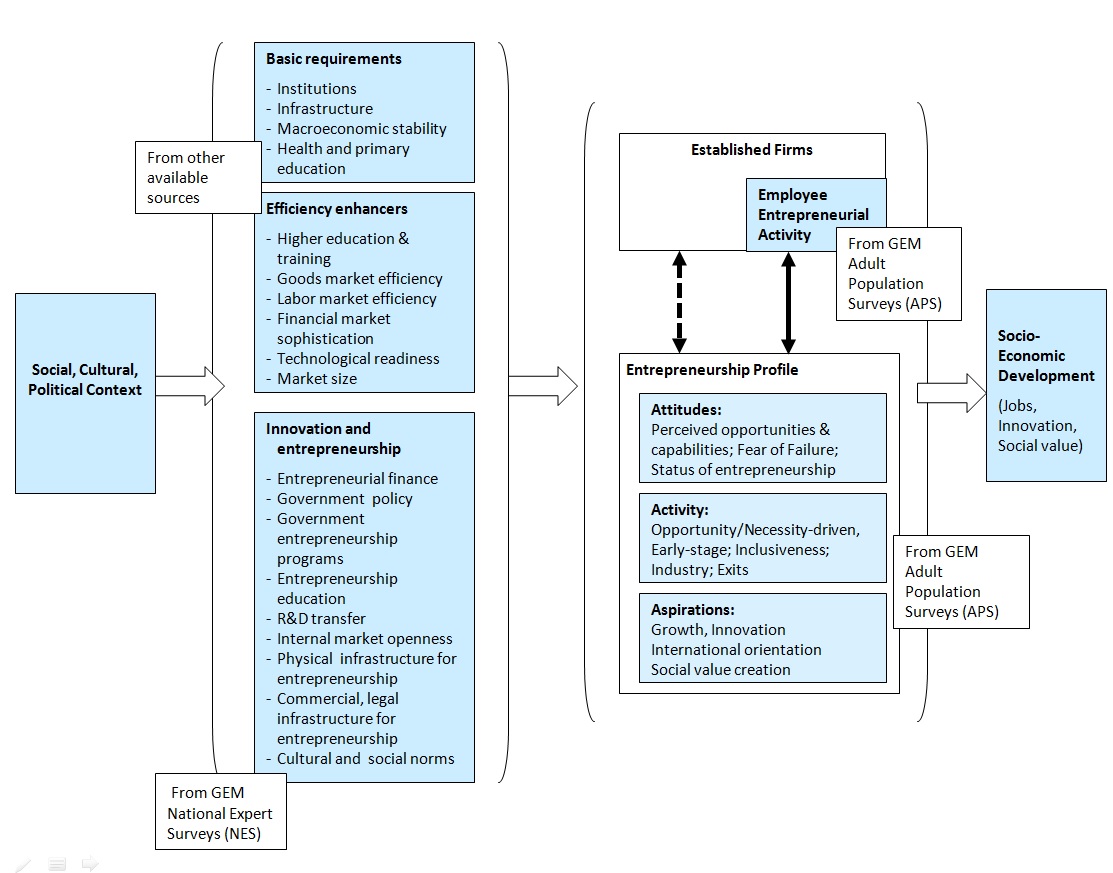
Source: GEM 2011 Global Report
Using the findings of GEM surveys over the years, the initial conceptual framework evolved into the version shown above in 2011.
The major revision of this GEM conceptual framework was to open the "black box" - Entrepreneurship Profile. Since the GEM survey’s early beginnings, the implicit assumption of mutual relationships among attitudes, aspirations and activities was in-built in the conceptual framework, without spelling out the nature of these relationships.
The 2011 review also added a new dynamic element in that it incorporated an understanding of how economies change as they develop, and the changing nature and contribution of entrepreneurship in this development.
For factor-driven economies, economic development is primarily driven by basic requirements: development of institutions, infrastructure, macroeconomic stability and health and primary education.
In efficiency-driven economies, government focus is (or should be) on ensuring smooth mechanisms such as a proper functioning of the market; higher education systems, goods and labor markets and technological readiness. Even though these conditions are not directly related to entrepreneurship in the Schumpeterian sense of “creative destruction”, they are indirectly related since the development of markets will also attract and enable more entrepreneurship.
Finally, for countries whose economic development is primarily innovation-driven, entrepreneurial framework conditions become more important as levers of economic development than basic requirements or efficiency enhancers.
The outcome of the model remained the same: national economic growth through, for example, job creation and technical innovation.
